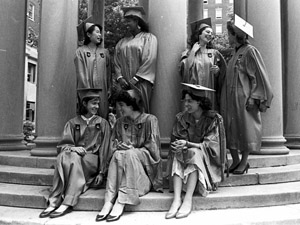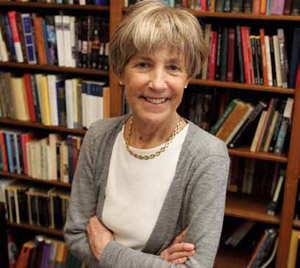
As this special section shows, coeducation’s ripple effects are still being felt — by women students and the alumnae who mentor them, by female faculty and the administration that encourages their presence, by the mothers and children who are forming bonds over a shared undergraduate experience.
It also is worth remembering that the decision to admit women was motivated less by feminist principles than by the dual goals of increasing application numbers and improving the quality of life for all students, which it did. Looking at the bigger picture, coeducation, together with guaranteed student housing and the revitalization of New York City, has led to a sustained renaissance for Columbia College.
For this, we celebrate.
 Class of 1987 Heralds New Era at Columbia
Class of 1987 Heralds New Era at Columbia
Marking the end of the four-year transition from the all-male school it had been since 1754, Columbia College graduated its first fully coeducational class 25 years ago this spring.
 Share Your Memories
Share Your Memories
We want to hear from alumni about this turning point in the College’s history. Share your memories of the transition on campus and in the classroom, and let us know about the impact that Columbia has had on your life.
 Women at the Podium
Women at the Podium
Coeducation spurred recruitment of female faculty, though parity remains a work in progress.
 Women's Wisdom
Women's Wisdom
Columbia College Women matches students with alumnae in successful mentorship program
 Den Mothers
Den Mothers
In the years since the Class of 1987 graduated, Columbia alumnae have excelled in fields from business and law to philanthropy and the arts. Amid their journeys, many have started families and had children — a handful of whom now attend the College themselves.
 The First Ten Years
The First Ten Years
A decade after coeducation transformed Columbia College, a special issue of Columbia College Today examined the changes to campus during that time.
 Columbia Daily Spectator
Columbia Daily Spectator
This spring, the Columbia Daily Spectator published a series of articles looking at the history of coeducation and the relationship between Columbia College and Barnard.
